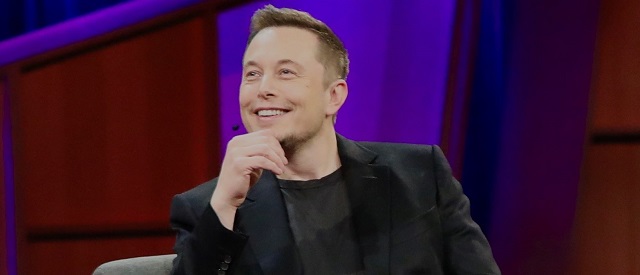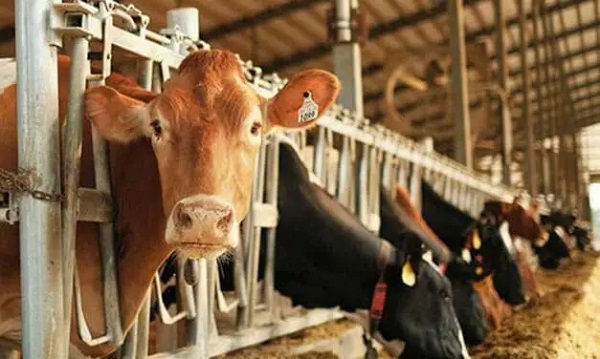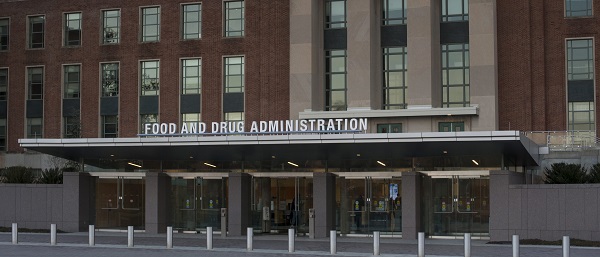Business
Elon Musk Sues Literal Globalists For Alleged Advertising Conspiracy Against Him

From the Daily Caller News Foundation
By HAILEY GOMEZ
Billionaire Elon Musk declared “war” on Tuesday after filing a lawsuit against a handful of advertisers for allegedly violating antitrust laws by illegally boycotting his social media company and depriving X billions in revenue.
Musk and X Corp. CEO Linda Yaccarino took to the social media platform to address the lawsuit against the Global Alliance for Responsible Media (GARM), the World Federation of Advertisers, and GARM members CVS Health, Mars, Orsted and Unilever. The lawsuit claims the group of advertisers allegedly “conspired” to withhold billions in revenue from the social media company by coordinating a group boycott against advertising on the platform after Musk bought the company in 2022.
Yaccarino discussed the company’s decision in an open letter to advertisers, calling them out for choosing to “dismiss the facts” despite the company’s massive user growth jumping 25% since August 2022.
“The illegal behavior of these organizations and their executives cost X billions of dollars. Since arriving at X, I made it my mission to continue to build a platform where people, brands and advertisers can thrive in our unique, dynamic and safe environment,” Yaccarino wrote.
“We have proven our platform provides advertisers a way to showcase their brands and reach their target audiences safely, efficiently and effectively. That’s why I’ve worked in good faith with marketers across the globe to showcase our innovations and allay any concerns with brands whom I’ve partnered with for decades,” Yaccarino continued. “The unfortunate reality is that despite all our efforts, hundreds of meetings and research to the contrary, many companies chose to dismiss the facts. To those who broke the law, we say enough is enough.”
Musk commented on the announcement, responding to Yaccarino’s post with, “We tried peace for 2 years, now it is war.”
We tried peace for 2 years, now it is war https://t.co/elgT62uDtF
— Elon Musk (@elonmusk) August 6, 2024
The U.S. House of Representatives Judiciary Committee released a report in July on GARM’s harm to online speech. The Committee obtained evidence that shows GARM “and its members directly organized boycotts and used other indirect tactics to target disfavored platforms, content creators, and news organizations in an effort to demonetize and, in effect, limit certain choices for consumers.”
X’s advertising revenue dropped nearly 60% between April 2023 to May 2023. Major companies such as Apple, Amazon and Disney were among the group to either decrease or pause spending on the platform following Musk’s take over, with some ad agencies blaming misinformation and hate speech as a reason.
A federal judge ruled against Google on Monday, stating the major tech company violated antitrust law through its search business.
Featured Image Credit: Flickr/Steve Jurvetson
Business
Some Of The Wackiest Things Featured In Rand Paul’s New Report Alleging $1,639,135,969,608 In Gov’t Waste


From the Daily Caller News Foundation
Republican Kentucky Sen. Rand Paul released the latest edition of his annual “Festivus” report Tuesday detailing over $1 trillion in alleged wasteful spending in the U.S. government throughout 2025.
The newly released report found an estimated $1,639,135,969,608 total in government waste over the past year. Paul, a prominent fiscal hawk who serves as the chairman of the Senate Homeland Security and Governmental Affairs Committee, said in a statement that “no matter how much taxpayer money Washington burns through, politicians can’t help but demand more.”
“Fiscal responsibility may not be the most crowded road, but it’s one I’ve walked year after year — and this holiday season will be no different,” Paul continued. “So, before we get to the Feats of Strength, it’s time for my Airing of (Spending) Grievances.”
Dear Readers:
As a nonprofit, we are dependent on the generosity of our readers.
Please consider making a small donation of any amount here.
Thank you!
The 2025 “Festivus” report highlighted a spate of instances of wasteful spending from the federal government, including the Department of Health and Human Services (HHS) spent $1.5 million on an “innovative multilevel strategy” to reduce drug use in “Latinx” communities through celebrity influencer campaigns, and also dished out $1.9 million on a “hybrid mobile phone family intervention” aiming to reduce childhood obesity among Latino families living in Los Angeles County.
The report also mentions that HHS spent more than $40 million on influencers to promote getting vaccinated against COVID-19 for racial and ethnic minority groups.
The State Department doled out $244,252 to Stand for Peace in Islamabad to produce a television cartoon series that teaches children in Pakistan how to combat climate change and also spent $1.5 million to promote American films, television shows and video games abroad, according to the report.
The Department of Veterans Affairs (VA) spent more than $1,079,360 teaching teenage ferrets to binge drink alcohol this year, according to Paul’s report.
The report found that the National Science Foundation (NSF) shelled out $497,200 on a “Video Game Challenge” for kids. The NSF and other federal agencies also paid $14,643,280 to make monkeys play a video game in the style of the “Price Is Right,” the report states.
Paul’s 2024 “Festivus” report similarly featured several instances of wasteful federal government spending, such as a Las Vegas pickleball complex and a cabaret show on ice.
The Trump administration has been attempting to uproot wasteful government spending and reduce the federal workforce this year. The administration’s cuts have shrunk the federal workforce to the smallest level in more than a decade, according to recent economic data.
Festivus is a humorous holiday observed annually on Dec. 23, dating back to a popular 1997 episode of the sitcom “Seinfeld.” Observance of the holiday notably includes an “airing of grievances,” per the “Seinfeld” episode of its origin.
Alberta
A Christmas wish list for health-care reform

From the Fraser Institute
By Nadeem Esmail and Mackenzie Moir
It’s an exciting time in Canadian health-care policy. But even the slew of new reforms in Alberta only go part of the way to using all the policy tools employed by high performing universal health-care systems.
For 2026, for the sake of Canadian patients, let’s hope Alberta stays the path on changes to how hospitals are paid and allowing some private purchases of health care, and that other provinces start to catch up.
While Alberta’s new reforms were welcome news this year, it’s clear Canada’s health-care system continued to struggle. Canadians were reminded by our annual comparison of health care systems that they pay for one of the developed world’s most expensive universal health-care systems, yet have some of the fewest physicians and hospital beds, while waiting in some of the longest queues.
And speaking of queues, wait times across Canada for non-emergency care reached the second-highest level ever measured at 28.6 weeks from general practitioner referral to actual treatment. That’s more than triple the wait of the early 1990s despite decades of government promises and spending commitments. Other work found that at least 23,746 patients died while waiting for care, and nearly 1.3 million Canadians left our overcrowded emergency rooms without being treated.
At least one province has shown a genuine willingness to do something about these problems.
The Smith government in Alberta announced early in the year that it would move towards paying hospitals per-patient treated as opposed to a fixed annual budget, a policy approach that Quebec has been working on for years. Albertans will also soon be able purchase, at least in a limited way, some diagnostic and surgical services for themselves, which is again already possible in Quebec. Alberta has also gone a step further by allowing physicians to work in both public and private settings.
While controversial in Canada, these approaches simply mirror what is being done in all of the developed world’s top-performing universal health-care systems. Australia, the Netherlands, Germany and Switzerland all pay their hospitals per patient treated, and allow patients the opportunity to purchase care privately if they wish. They all also have better and faster universally accessible health care than Canada’s provinces provide, while spending a little more (Switzerland) or less (Australia, Germany, the Netherlands) than we do.
While these reforms are clearly a step in the right direction, there’s more to be done.
Even if we include Alberta’s reforms, these countries still do some very important things differently.
Critically, all of these countries expect patients to pay a small amount for their universally accessible services. The reasoning is straightforward: we all spend our own money more carefully than we spend someone else’s, and patients will make more informed decisions about when and where it’s best to access the health-care system when they have to pay a little out of pocket.
The evidence around this policy is clear—with appropriate safeguards to protect the very ill and exemptions for lower-income and other vulnerable populations, the demand for outpatient healthcare services falls, reducing delays and freeing up resources for others.
Charging patients even small amounts for care would of course violate the Canada Health Act, but it would also emulate the approach of 100 per cent of the developed world’s top-performing health-care systems. In this case, violating outdated federal policy means better universal health care for Canadians.
These top-performing countries also see the private sector and innovative entrepreneurs as partners in delivering universal health care. A relationship that is far different from the limited individual contracts some provinces have with private clinics and surgical centres to provide care in Canada. In these other countries, even full-service hospitals are operated by private providers. Importantly, partnering with innovative private providers, even hospitals, to deliver universal health care does not violate the Canada Health Act.
So, while Alberta has made strides this past year moving towards the well-established higher performance policy approach followed elsewhere, the Smith government remains at least a couple steps short of truly adopting a more Australian or European approach for health care. And other provinces have yet to even get to where Alberta will soon be.
Let’s hope in 2026 that Alberta keeps moving towards a truly world class universal health-care experience for patients, and that the other provinces catch up.
-

 International1 day ago
International1 day agoGeorgia county admits illegally certifying 315k ballots in 2020 presidential election
-

 Alberta1 day ago
Alberta1 day agoA Christmas wish list for health-care reform
-

 Business23 hours ago
Business23 hours agoSome Of The Wackiest Things Featured In Rand Paul’s New Report Alleging $1,639,135,969,608 In Gov’t Waste
-

 Energy23 hours ago
Energy23 hours ago‘The electric story is over’
-

 Business2 days ago
Business2 days agoWarning Canada: China’s Economic Miracle Was Built on Mass Displacement
-

 Agriculture2 days ago
Agriculture2 days agoThe Climate Argument Against Livestock Doesn’t Add Up
-

 International13 hours ago
International13 hours ago$2.6 million raised for man who wrestled shotgun from Bondi Beach terrorist
-

 Alberta1 day ago
Alberta1 day agoWhat are the odds of a pipeline through the American Pacific Northwest









